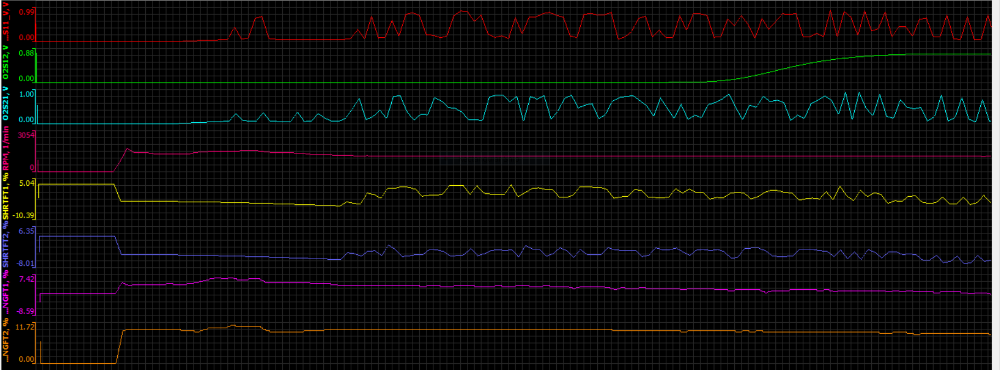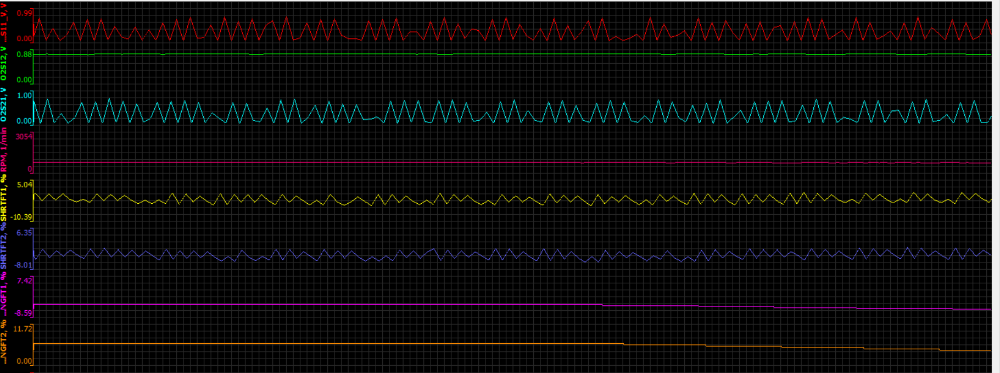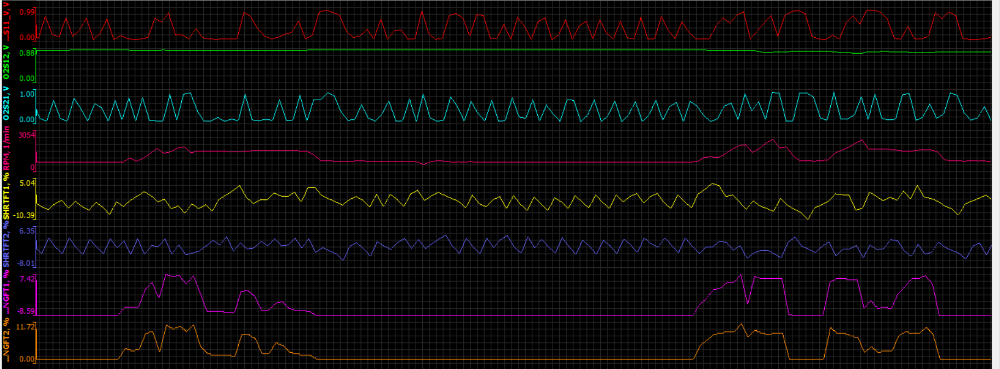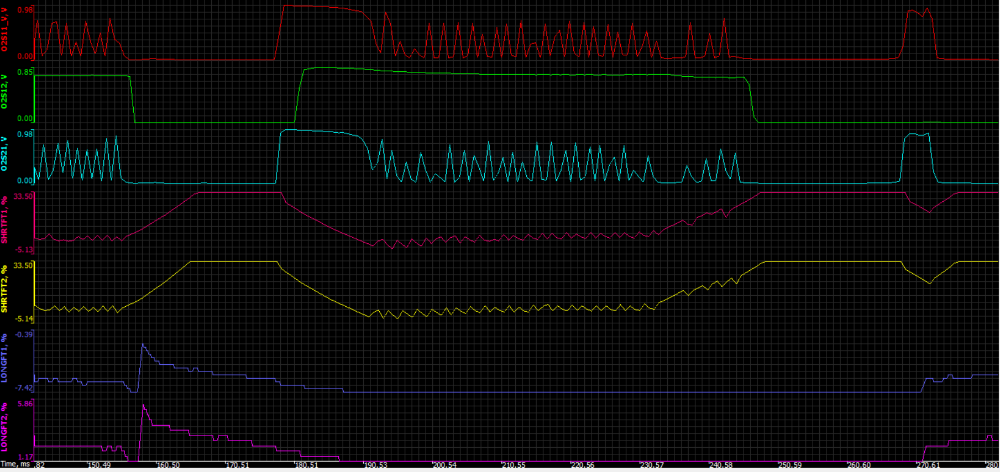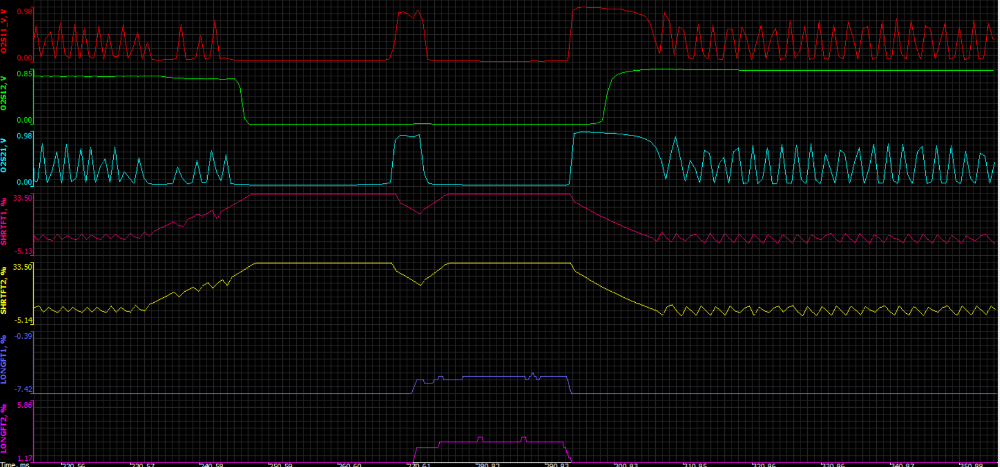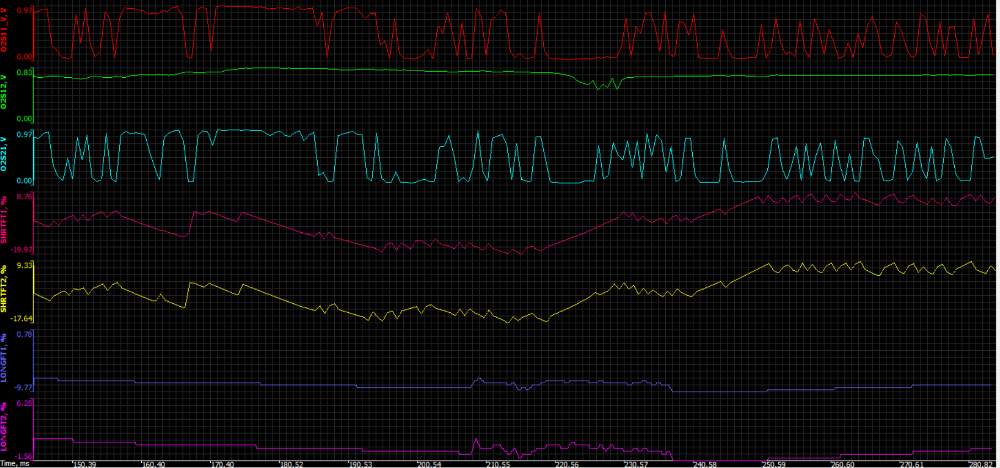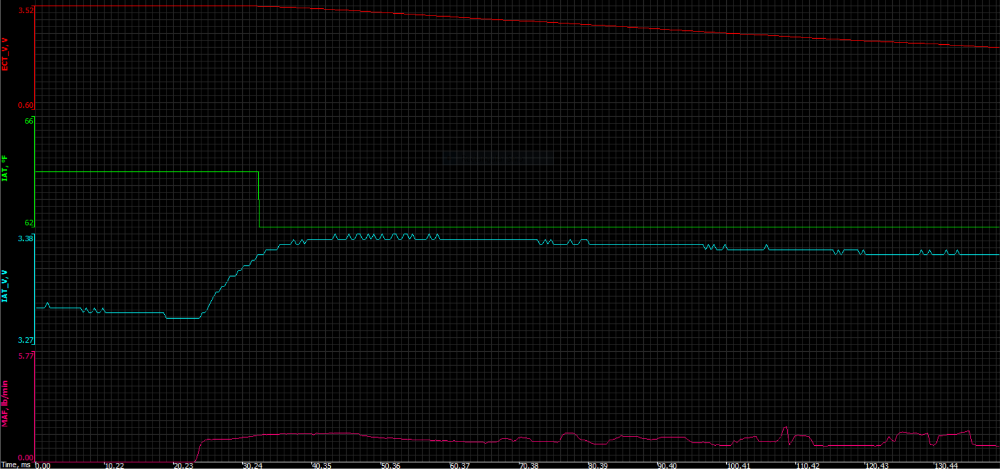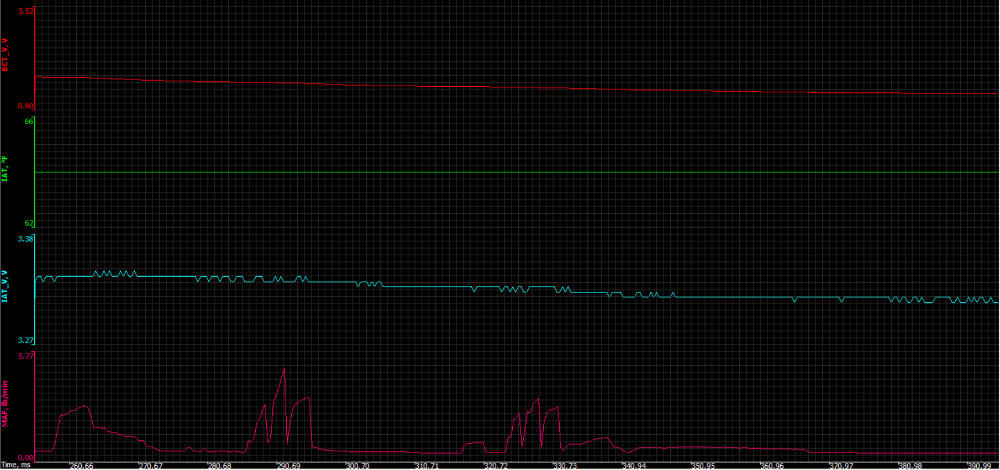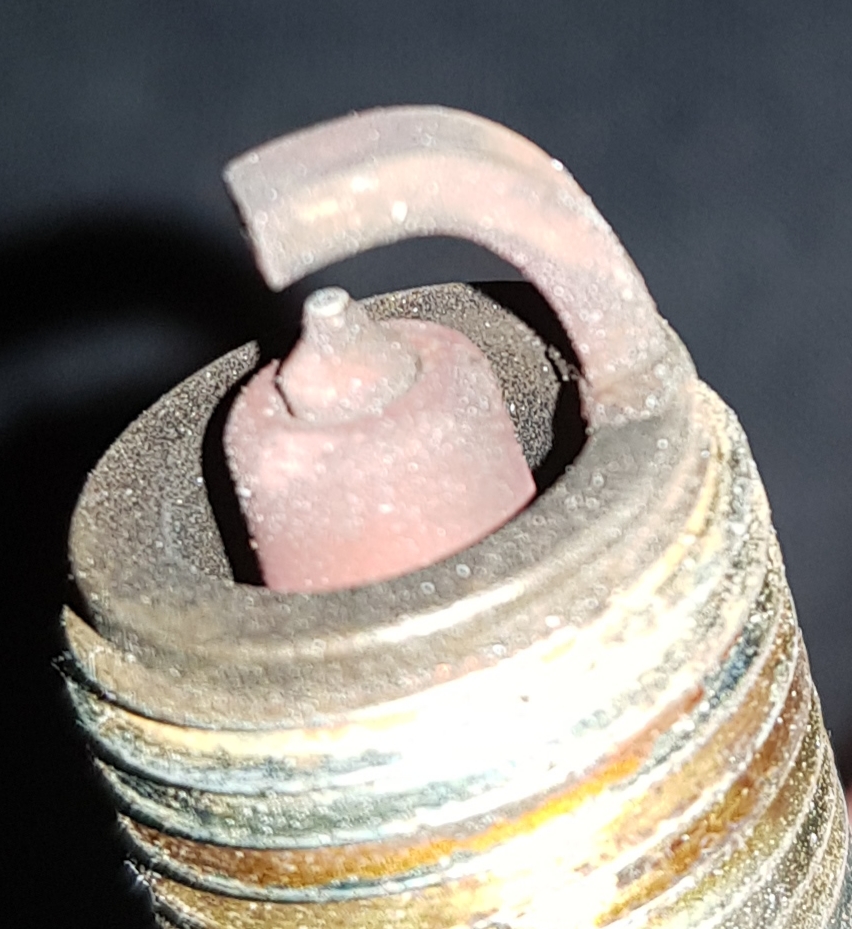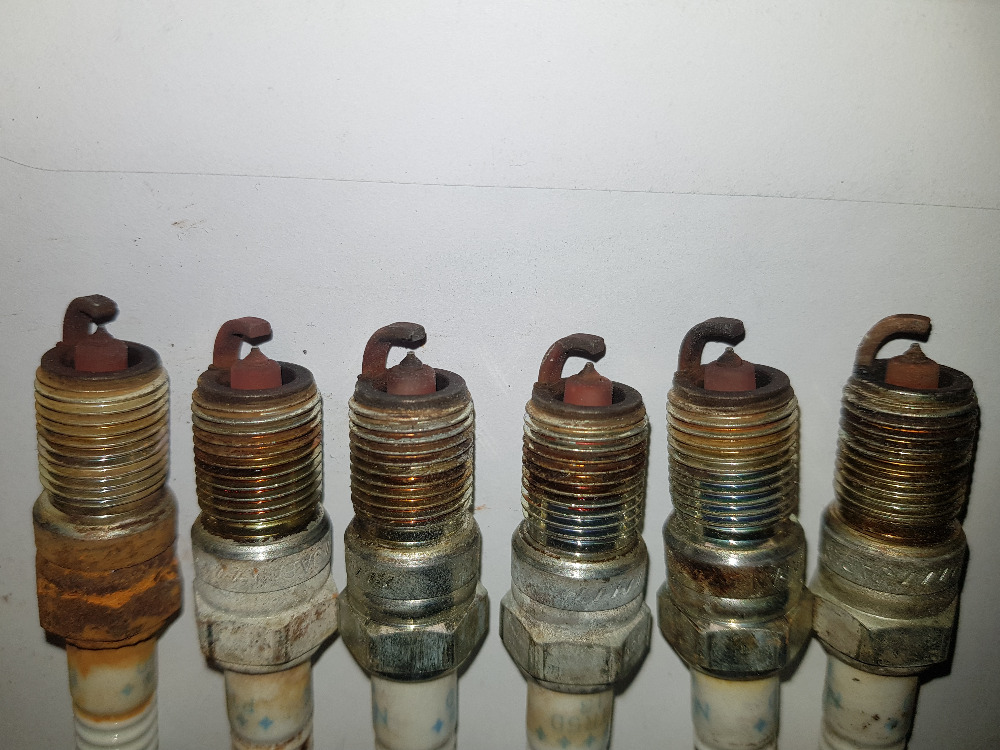*** Restricting New Posts to SD Premium Members ONLY *** (09 May 2025)
Just made a new account? Can't post? Click above.
High fuel consumption, hesitation on occasion when accelerating in higher gears.
- tl58
-
Topic Author
- Offline
- New Member
-

- Posts: 11
- Thank you received: 0
It seemed to develop the problem a while back after I fixed a vacuum leak on the oil separator assembly vacuum lines. I'd had the MIL come on then and lean codes P0171 and P0174 for banks 1 & 2, but it ran OK like this though so I didn't immediately troubleshoot it but after a few weeks I heard a loud hiss when it was idling, found the leak and fixed it. MIL light went off after that, cleared the codes and they didn't come back. But not long after (maybe a month or two because I hadn't really been driving the car much), I noticed the lowered fuel mileage and it seems to have got worse lately.
The car also started misfiring at the same time I noticed the high fuel consumption (and it was quite bad at early on), I assumed it was maybe the coil/plugs/leads that were gone or going bad, which may also explain the higher fuel consumption, so I replaced all of them. This actually did seem to cure the car's hiccups for a short period but I noticed it was still hesitating in higher gears up hills. Certainly seems to do more in wet weather than dry.
Someone suggested to me recently to check the oxygen sensors on the car so I've been using Forscan on my laptop connected to the ODB port of the car to check things, but being a novice I'm not really sure what I'm looking for. The engine has three sensors on it, two upstream, one on either bank of course, and a single downstream after the main cat. Looking at the oscilloscope function of Forscan it seems the upstream sensors are at least working as they do seem to be constantly switching back and forth between lean and rich. The downstream sensor stays fairly constant after the engine starts to warm up.
From top to bottom, it's OS11, OS12, OS21, RPM, STFT1, STFT2, LTFT1 & LTFT2. That screenshot shows the first two minutes from when I started the car from cold and just left it to idle while it warmed up.
This screenshot shows it from ten minutes onwards after it had warmed up. The only thing on these graphs that I would say seems off based on my (very) limited knowledge from what I've been reading is the LTFT on bank 2 seems to be riding positive all the time, and never goes negative like the other LTFT, so I assume the problem is on bank 2.
I recorded the data while idling but I also went out for a drive in it while still recording too, hence why I added the RPM data:
This is around the twenty minute mark, driving around town. I know what I've provided is fairly limited, but I would appreciate it greatly if at least someone could give me some suggestions and pointers as to how I might go about continuing to diagnose this. Many thanks!
Please Log in or Create an account to join the conversation.
- Hardtopdr2
-
- Offline
- Platinum Member
-

- Posts: 851
- Thank you received: 148
Please Log in or Create an account to join the conversation.
- tl58
-
Topic Author
- Offline
- New Member
-

- Posts: 11
- Thank you received: 0
Please Log in or Create an account to join the conversation.
- tl58
-
Topic Author
- Offline
- New Member
-

- Posts: 11
- Thank you received: 0
Then I tried it again with some revs.
I did the rich test too, plugged the vacuum leak then ran propane into the air intake. I couldn't quite manage to get a steady flow of propane into the intake because the valve on my propane bottle is a bit dodgy but you can see where it went rich a few times:
So, looks like the upstreams both reacted to the rich condition but the downstream didn't change much.
I will also note that I couldn't smell fuel while I was doing either test, I usually only smell it when the engine starts up anyway.
At any rate, does that downstream sensor look kaput then? I'd love it if that's all that's wrong with the thing, because that sensors actually nice and easy to get at and I do have a new spare downstream sensor I can fit.
Please Log in or Create an account to join the conversation.
- Tyler
-

- Offline
- Moderator
-

- Full time HACK since 2012
- Posts: 6043
- Thank you received: 1519
Did Forscan list a Rear O2 Fuel Trim in the PCM data list? Probably not, given the model year, but it might be fun to check.
Did any of your previous captures show the hesitation in 3rd/4th or when accelerating hard up a hill? If not, could you get a capture of that and post it? Because your trims are pretty good, IMO. :silly: Little bit of a positive change in the long terms on acceleration? But that's not unusual on a 19 year old vehicle.
Please Log in or Create an account to join the conversation.
- tl58
-
Topic Author
- Offline
- New Member
-

- Posts: 11
- Thank you received: 0
As for if the captures show any of the misfires, I didn't think to note when if any misfires happened when I was recording the graphs, so if they do show any I uselessly couldn't tell you where.
Annoyingly, I've been trying to get the car to misfire while recording forscans output since you posted that and I cannot for life of me get it to do it now. It's like it knows and won't play ball. I'll keep trying.
Please Log in or Create an account to join the conversation.
- guafa
-
- Offline
- Platinum Member
-

- Posts: 477
- Thank you received: 80
Are wheels moving freely?
No suspension/trans issues?
Maybe is not related with engine.
Regards.
Please Log in or Create an account to join the conversation.
- tl58
-
Topic Author
- Offline
- New Member
-

- Posts: 11
- Thank you received: 0
Could it be the fuel pressure regulator?
Please Log in or Create an account to join the conversation.
- guafa
-
- Offline
- Platinum Member
-

- Posts: 477
- Thank you received: 80
Since all PID's you have posted look pretty normal.
I think we need to "expand" the search. ECT, MAT, air flow.
Please Log in or Create an account to join the conversation.
- tl58
-
Topic Author
- Offline
- New Member
-

- Posts: 11
- Thank you received: 0
Please Log in or Create an account to join the conversation.
- tl58
-
Topic Author
- Offline
- New Member
-

- Posts: 11
- Thank you received: 0
Top to bottom it's; ECT sensor voltage, IAT °F, IAT sensor voltage, MAF lb/min. Graph begins a few seconds before I started engine from cold and drove it for a while until it had warmed up.
Please Log in or Create an account to join the conversation.
- tl58
-
Topic Author
- Offline
- New Member
-

- Posts: 11
- Thank you received: 0
This did make me wonder if perhaps the PCV valve has failed as I've read that can cause things like oil leaks and high fuel consumption? Typically on this engine it's hidden under the upper inlet manifold so I'd have to take it off to get an actual look at it which I'll likely end up doing over the weekend, however I was able to stick my hand under the throttle body and follow the vacuum lines back to where it connects to the PCV and it felt very oily where it connects.
As I say I think I'm going to have to bite the bullet and take the manifold off in the next few days and check on these things, but if anyone's got any pointers in the mean time I'd appreciate the input. Thanks for all the help so far by the way guys, this is as much a learning experience as it is a fault finding escapade for me.
Please Log in or Create an account to join the conversation.
- Hardtopdr2
-
- Offline
- Platinum Member
-

- Posts: 851
- Thank you received: 148
Please Log in or Create an account to join the conversation.
- tl58
-
Topic Author
- Offline
- New Member
-

- Posts: 11
- Thank you received: 0
Please Log in or Create an account to join the conversation.
- Hardtopdr2
-
- Offline
- Platinum Member
-

- Posts: 851
- Thank you received: 148
Please Log in or Create an account to join the conversation.
- Andy.MacFadyen
-

- Offline
- Moderator
-

- Posts: 3353
- Thank you received: 1037
" We're trying to plug a hole in the universe, what are you doing ?. "
(Walter Bishop Fringe TV show)
Please Log in or Create an account to join the conversation.
- tl58
-
Topic Author
- Offline
- New Member
-

- Posts: 11
- Thank you received: 0
I still haven't found the time to take the manifold off to look at the fuel regulator directly with or without the prssure tester either, but based on my basic checks it doesn't even look like it has a pressure regulator, not in the traditional sense anyway - all documentation I found says it's on the fuel rail under the manifold but I can't feel it there when tracing my hand back along the fuel rail. I did cheat slightly and undo the bolts holding the manifold on (but without taking the rest of the connections off), just so I could lift it up slightly and look under it, and again couldn't see the regulator where it's supposed to be or feel it with my hand. DOesn't mean it isn't there of course as I'd only know for certain by taking the manifold off completely it seems, but having looked at various pictures of the fuel rail for this engine online it looks like there's two versions Ford used, one with a regulator where everything says it's supposed to be and one without. If this is the one without the regulator under the manifold, I've no idea therefore where the regulator actually is. Could it be part of or attached to the fuel pump instead?
As you know I changed the spark plugs earlier in the year hoping it was part of the problem, but it wasn't. I've never actually looked at the old plugs but I still have them and it occured to me I might see fouling on one or more of the old plugs potentially showing a potential culprit. But they mostly all look the same as this one:
I'm certainly not going to pretend I can say for sure they all look OK, but based on pictures I've searched for on plug condition "reading", aside from the red tan which I'm lead to believe is normal due to fuel additives, they're all fairly healthy looking (unless I'm utterly wrong but then that's why I'm posting the pics so someone can tell me as much).
Please Log in or Create an account to join the conversation.
- Hardtopdr2
-
- Offline
- Platinum Member
-

- Posts: 851
- Thank you received: 148
Please Log in or Create an account to join the conversation.
- tl58
-
Topic Author
- Offline
- New Member
-

- Posts: 11
- Thank you received: 0
I still haven't been able to buy a pressure tester. Just haven't had the money to spare, even for a cheap one (though all the cheap ones avail;able to me don't mention being compatible with fords specifically so I don't trust them anyway).
I saw some guy on youtube test his injectors for leaks while under pressure (but not with the engine running or doing a leak off test) just by pulling them out of the engine while still attached to the fuel rail (but unplugged from the harness) and turning the fuel pump on. So I did the same thing and none of my injectors are leaking in that way. I know that still doesn't necessarily mean I haven't got a bad injector, but I haven't got anything left in me to try and carry on testing it.
Looked at the flaps when I had the manifold off. They operate OK, and I wouldn't say there was excessive amounts of gunk or oil around them or the inlets so I suspect the pcv valve is fine. The IMRC apparently not working might just have been a fluke, or, it's suffered the common fault these duratecs have witht heir IMRCs and the PCB in the actual control unit is dead. Not really worth bothering to fix since I rarely drive the thing at high revs anyway so the secondaries rarely get to open.
Looks like I'm just going to have to admit defeat and take it to a mechanic.
Please Log in or Create an account to join the conversation.

